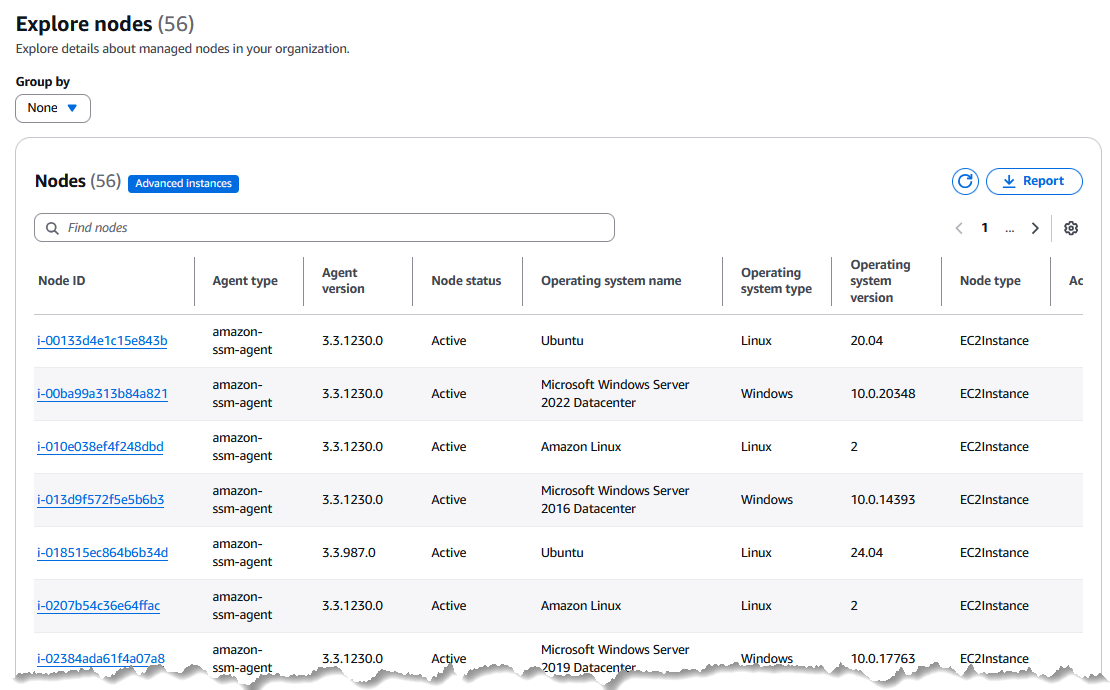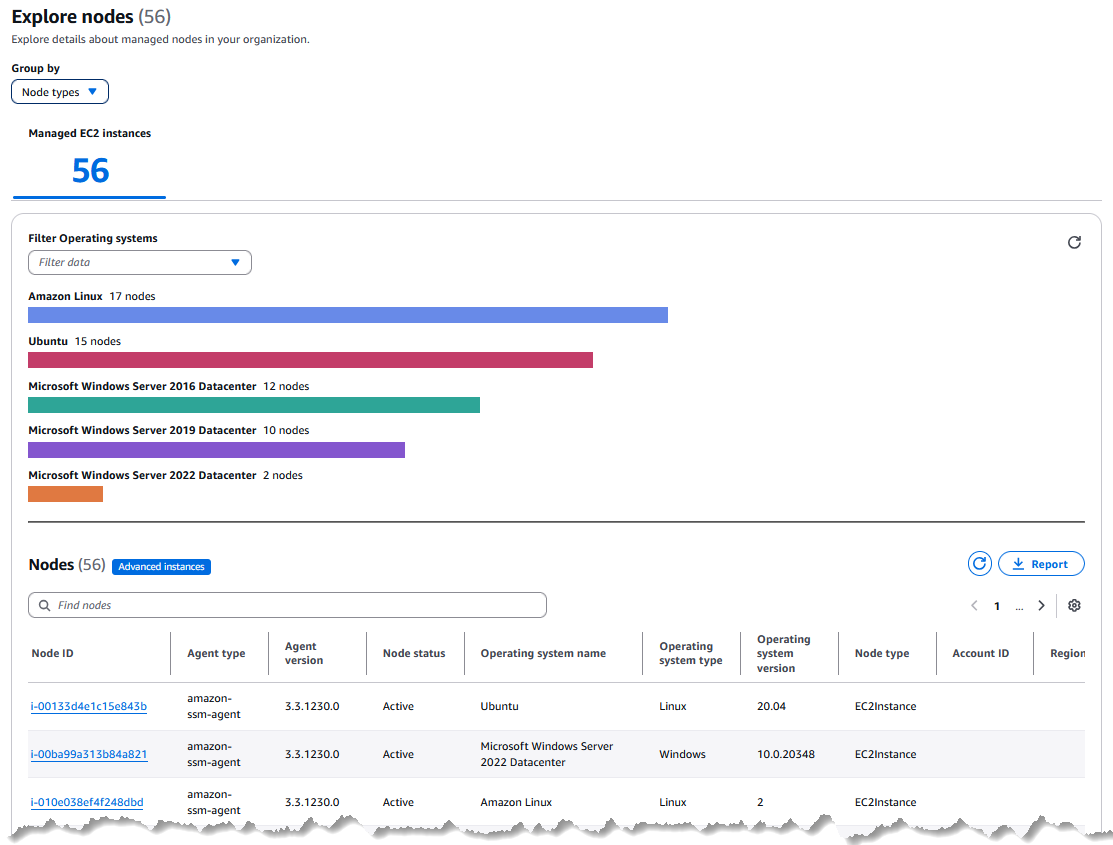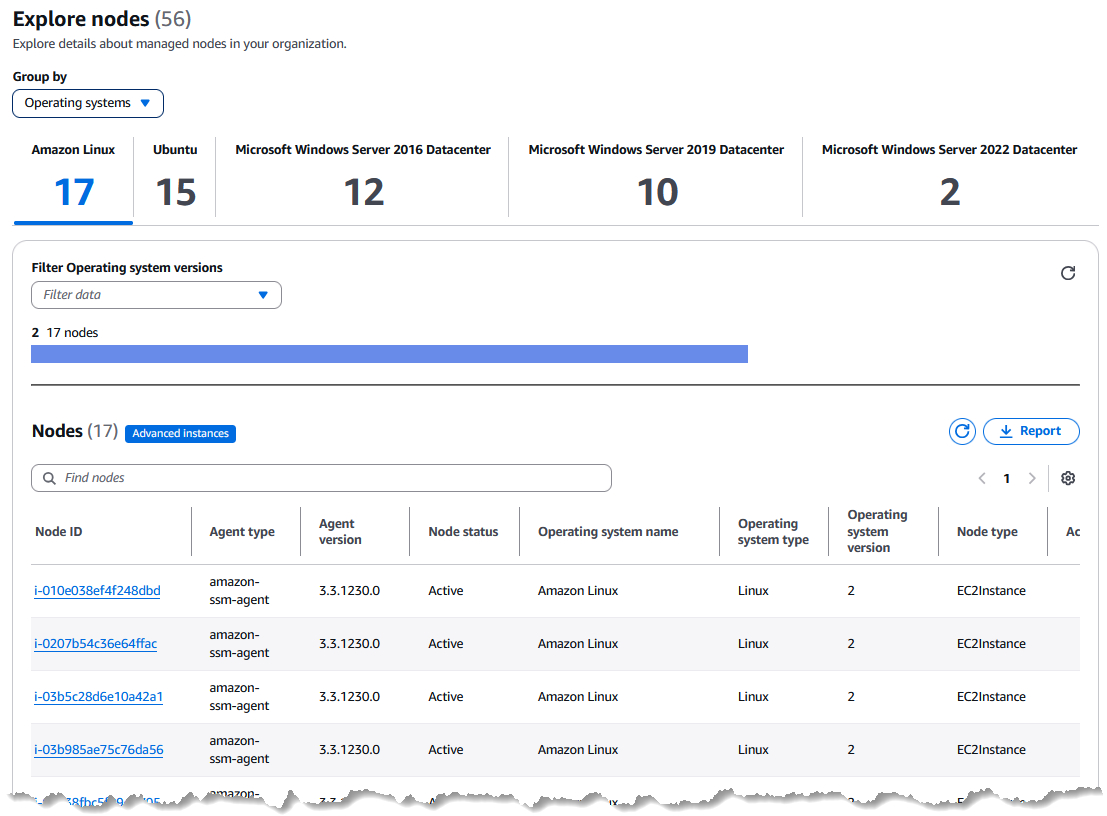Services or capabilities described in Amazon Web Services documentation might vary by Region. To see the differences applicable to the China Regions,
see Getting Started with Amazon Web Services in China
(PDF).
Amazon Systems Manager Change Manager is no longer open to new customers. Existing customers can continue to use the service as normal. For more information, see
Amazon Systems Manager Change Manager availability change.
Exploring nodes using console
filters
In the Systems Manager console, you can then group your managed nodes according to the following
views:
- All nodes (No filter)
-
Lists all managed nodes in your organization or account.
- Node types
-
Provides tabs for viewing data separately for Amazon Elastic Compute Cloud (Amazon EC2) instances
and other machine types, including servers on your own premises (on-premises
servers), Amazon IoT Greengrass core devices, Amazon IoT and non-Amazon edge devices, and
virtual machines (VMs), including VMs in other cloud environments.
- Operating systems
-
Provides a tab for each operating system type in your organization or
account, such as Amazon Linux and Microsoft Windows
Server 2022 Datacenter. On each tab, you can further filter
the list by selecting only specific versions of the operating systems, such
as Amazon Linux 2 and Amazon Linux 2023.
- SSM Agent versions
-
Provides a tab for each version of SSM Agent installed on managed nodes in
your fleet. On each tab, you can further filter the list by selecting only
specific operating systems, such as Amazon Linux and
Microsoft Windows Server 2022 Datacenter.
In addition, for each of these views, you can further refine the list of nodes
reported by choosing to view only nodes for a certain property, such as node status,
Amazon Web Services account ID, organization unit ID, and more.
You can customize the report display by choosing which of the available data columns
are displayed in the Explore nodes page. You can also download
reports in CSV or JSON formats, or export
reports to Amazon S3 in CSV format.



